|
On "Black Sunday", the "novice" 389th
Bomb Group was effective against its assigned target.
The 389th
made one of the two as-planned attacks of the day. The Steaua Romana refinery was completely destroyed and did not resume production until the end of
the decade.
"Colonel Wood's force, much the least experienced of the five participating groups, succeeded in reaching the target area with all the aircraft that had been dispatched. Of the four groups which actually attacked selected targets, its losses were lightest, and it completely destroyed its target...
A lieutenant of the 389th Group, two days after the mission, wrote of it as follows:
That was our first low-altitude mission....
We came in wide open at house top level with all guns firing...after the bombs were away, we went lower and flew for 40 munites. In the fields and villages that we passed over people just stood in the streets and villages and waved. Very vew people ran for cover.
High altitude bombing is much better. At one hundred feet you see too damn much and besides being hard on your nerves...it scares hell out of you. We were in the air 14 hours."
Exerpt from the declassified military study of the Tidal Wave mission
U.S. Air Force Historical Study No. 103
 Casualties, however, were heavy.
Casualties, however, were heavy.
The 389th had to fly farther to their target than the other groups. The Germans had time to call in fighter squadrons as well as man the AA batteries.
From the waist window in Ole Irish, Don Pierce watched as an aircraft beside him flew to the target streaming high octane aviation fuel out of the bomb bay and the left wing tank. After bomb release the flaming plane, piloted by Lt. Hughes, crashed into the target area.
Ole Irish, piloted by Lt. Frank
McLaughlin, had one engine knocked out. The crew of "Old
Blister Butt" saw her limping away from the target area and escorted
her as far as the Mediteranean coast. Lt. McLaughlin gave his crew the opportunity
to give their opinions on whether they should try to return to base or head for
Turkey. The crew opted for the Banghazi base. They unbolted guns
and threw overboard whatever they could to lighten the load. She carried
her brave crew the entire distance across the Mediterranean sea back to Benghazi
on three engines.
Don Pierce recalled: "All the while we were just thinking about that shot of
whiskey they'd give us when we got back. When we got to the coast of Libya, we
landed at the first airstrip we came to. Then when we were taxiing from the runway,
the other (outboard) engine quit."
Of the 179 B-24s that took off from Benghazi, 41 aircraft and crew were lost.
56 did not return and
of those that did, less than 40 were still airworthy.
More about Operation Tidal Wave
Recommended Reading:
- The Ploesti Raid: Through the Lens by Roger Freeman (RZM Imports)
- Ploesti: The Great Ground-Air Battle of August 1, 1943 by James Dugan & Cal Stewart
- Black Sunday: Ploesti by Michael Hill
- Burning Hitler's Black Gold by Bob Sternfels
- Bomber Pilot by Phil Ardery
- Maternity Ward by Marguerite Arnowitz
- Low Level Mission by Leon Wolff
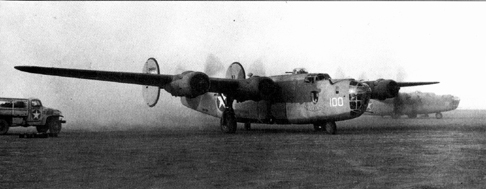
A B-24D operating from an airbase in the Libyan desert -
This bomber is returning from the raid on Ploesti
You can participate in an online discussion group dedicated to this history at
http://groups.yahoo.com/group/tidal-wave/
|
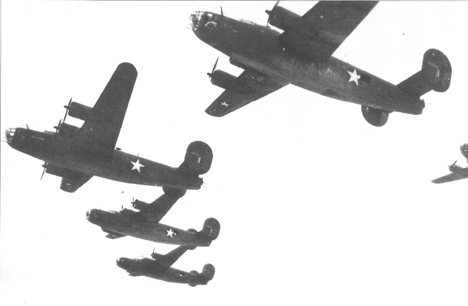
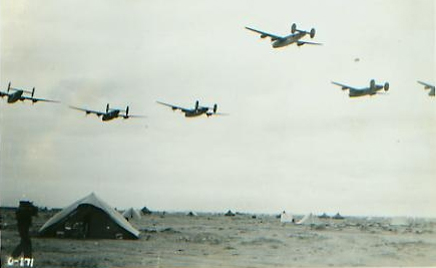
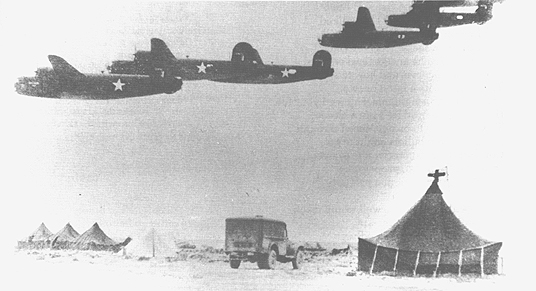
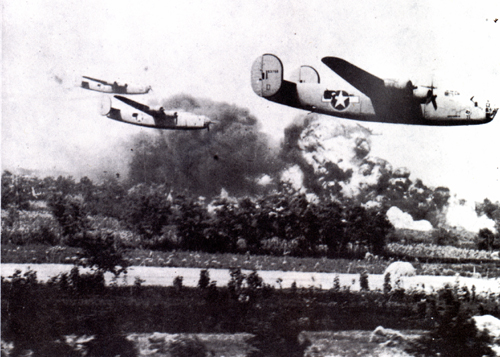
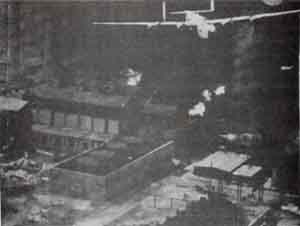 The refineries and oil tanks were already burning and exploding beneath them.
The refineries and oil tanks were already burning and exploding beneath them.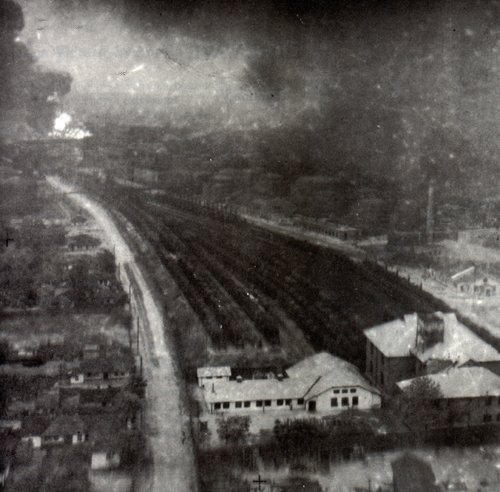
 Casualties, however, were heavy.
Casualties, however, were heavy.